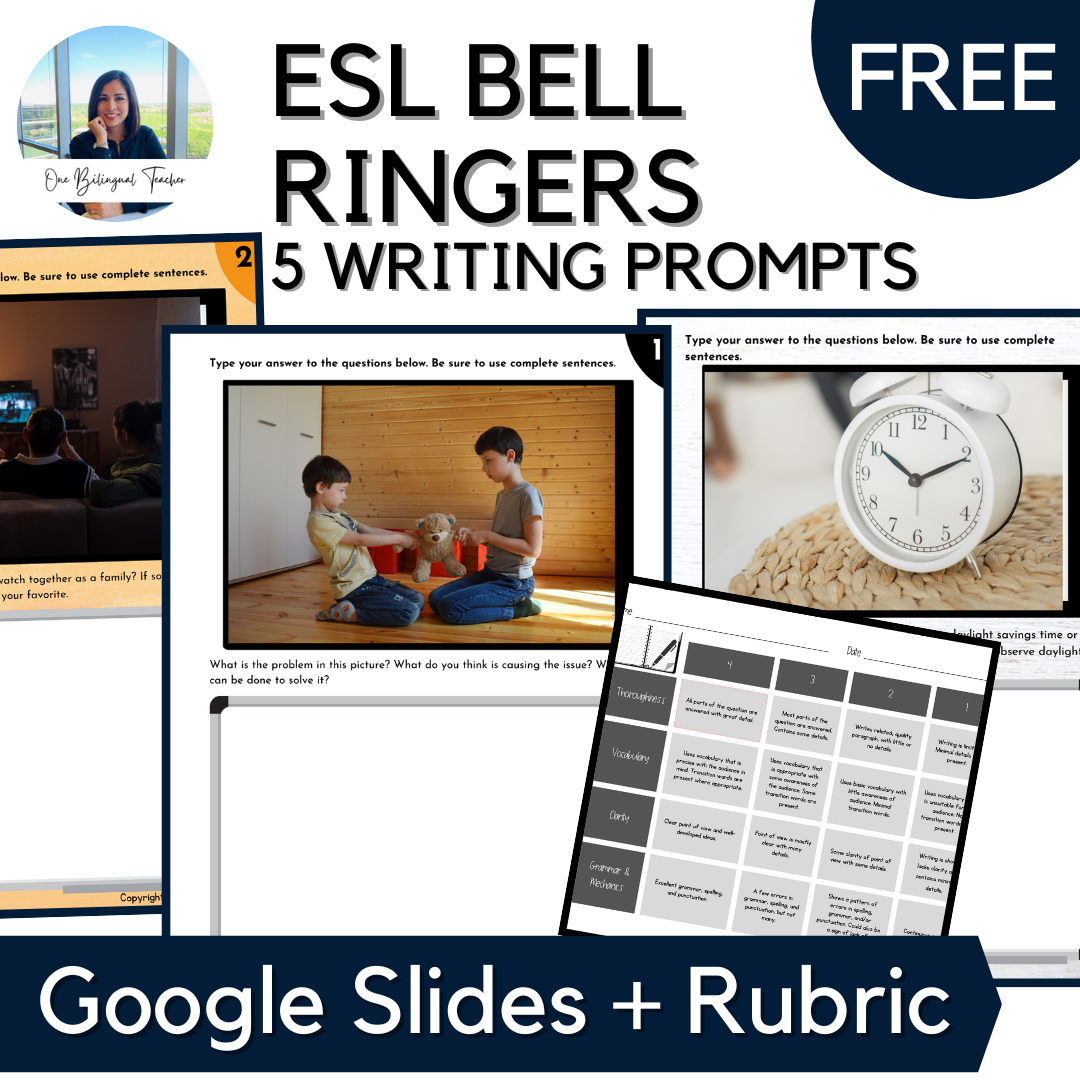10 Fun Activities to Develop Descriptive Writing in ESL Students
When it comes to writing, ESL students struggle with painting a picture in the reader’s mind due to a lack of description. They expect the reader to know what is going through their minds. Unfortunately, that’s not quite how it works. Our ESL students need help understanding that writing becomes more captivating when we transport our readers into the story with vivid imagery. In this blog post, we’ll explore 10 activities to develop descriptive writing in our ESL students that are actually fun. Pick and choose what works for your students depending on the grade level you’re teaching and the proficiency level of your students.
10 Fun Activities to Develop Descriptive Writing in ESL Students
Sensory Stations: Set up different stations in the classroom representing each sense (sight, sound, taste, touch, smell). Add pictures and/or real objects. Have students explore each station and write descriptive paragraphs based on their sensory experiences. Bonus points if your school lets you bring in real food!
Object Descriptions: Give students various objects and ask them to write detailed descriptions using descriptive language that engages multiple senses. Encourage them to think about how the object looks, feels, sounds, smells, and even tastes. Do this independently, in groups, or in pairs. Have students present their paragraphs.
Sensory Walk: Take students outside for a sensory walk around the school or nearby area. Have them observe their surroundings and write descriptive paragraphs focusing on what they see, hear, smell, and feel during the walk. Think of the school garden or even the soccer or football field. Have them describe the weather as well as the objects they see.
Show and Tell: Organize a "Show and Tell" session where students bring in objects or pictures that are meaningful to them. Have them describe their items using descriptive language and sensory details, allowing others to visualize and experience them through words.
Sensory Movie Scenes: Show students short movie scenes without dialogue and ask them to write descriptive narratives capturing the sensory experiences depicted in the scenes. Encourage them to focus on visual and auditory details. You can also show clips of movie scenes with the volume turned down to zero and have them describe what is going on.
Sensory Storytelling: Divide students into small groups and give each group a picture prompt. One student starts by describing the picture using sensory details, while the others listen and visualize the scene. Then, each student takes turns adding descriptive elements to the story, engaging different senses.
Sensory Comparison Chart: Provide students with a chart comparing different sensory experiences (e.g., the smell of freshly baked bread vs. the sound of rain). Have them choose one item from each category and write descriptive paragraphs comparing the sensory experiences. Bonus points for food!
Sensory Restaurant Menu: Have students imagine they are opening a unique restaurant. Ask them to create menus that not only describe the dishes but also engage the senses. They can write mouth-watering descriptions, incorporating sensory details to entice potential customers.
Sensory Word Collage: Provide students with a variety of magazines, newspapers, and catalogs. Ask them to cut out words or phrases that evoke different senses and create a sensory word collage. They can then use the words to write descriptive paragraphs or short stories.
Sensory Restaurant Review: Assign students the task of writing a restaurant review, focusing on describing the ambiance, flavors, and overall sensory experience of dining at a particular restaurant. Encourage them to use sensory details to paint a vivid picture for the readers.
BONUS Activity: Descriptive Writing Choice Board: Provide your students with engaging and thought-provoking writing activities.
In a Nutshell
These 10 fun activities will help your middle school ESL students develop their descriptive writing skills. By incorporating sensory details into their writing, students will not only enhance their language proficiency but also spark their imaginations and captivate readers. Through sensory walks, storytelling, word collages, role plays, and more, you can create a dynamic and engaging learning environment that sparks your ESL students’ creativity.




